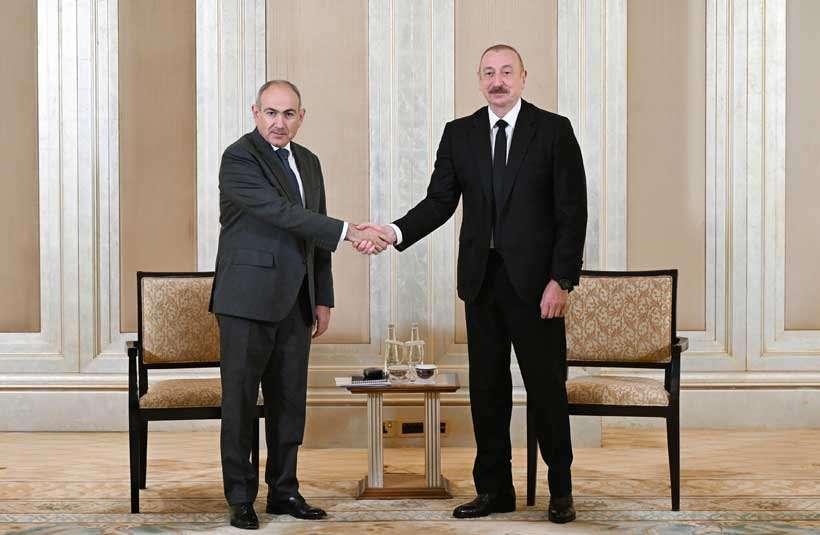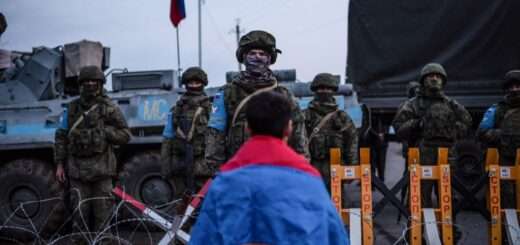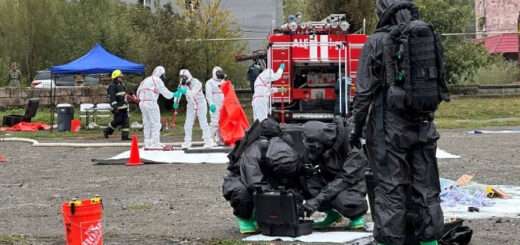More Diplomacy, Not Minefields, Needed to Secure Peace in the South Caucasus

By Hrair Balian
Moderndiplomacy.eu
On August 8, 2025, President Ilham Aliyev of Azerbaijan and Prime Minister Nikol Pashinyan of Armenia signed a joint declaration for peace at the White House, with President Donald Trump as witness. Their foreign ministers also initialed, pending “further actions” before signing, an Agreement on Establishment of Peace and Inter-State Relations.
Despite the summit theatrics and subsequent criticism—some warr
Critical Omissions
Three significant lacunae threaten the agreements’ sustainability:
First, detailed terms for the 99-year U.S. land lease to build the 43.5-kilometer “Trump Route for International Peace and Prosperity” (TRIPP) across Armenia’s southern Syunik region, and the “reciprocal benefits” Armenia would receive through Azerbaijani territory, remain unspecified.
Second, the fate of 23 Armenian hostages in Baku, subjected to sham trials without proper defense or independent observers, is ignored.
Third, the rights of indigenous Armenians expelled from Nagorno-Karabakh in October 2023 following Azerbaijan’s assault, including their right of return and protection of historic heritage, are unaddressed.
The leaders also signed a memorandum dismissing the OSCE Minsk Group, mandated since 1992 to mediate the Nagorno-Karabakh conflict. This was purely ceremonial—the Minsk Group had already been moribund since 2022—serving only to inflate Aliyev’s ego.
They also signed multiple bilateral economic agreements with the U.S., some more consequential than others. In addition, the U.S. agreed to waive domestic legislation (“Section 907”) that banned U.S. military assistance to Azerbaijan, which had been waived yearly since 2001.
Constitutional Hurdle
Both documents require parliamentary ratification, easily achieved given both leaders’ absolute majorities. However, Armenia faces an additional hurdle: Azerbaijan claims the Armenian Constitution includes clauses that imply “territorial claims” on its territory, indirectly referenced in the Joint Declaration (Article 1). In response, Armenia must draft a new constitution that requires approval in a referendum by more than half of voters, but not less than one-fourth of registered voters (Constitution, Article 207).
This Azerbaijani-mandated constitutional change is highly unpopular in Armenia. Combined with Pashinyan’s declining approval, voters may reject the new constitution, especially if the three major gaps remain unresolved.
The TRIPP Project
The Joint Declaration in Articles 3 and 4 emphasizes “communications between the two countries for intra-state, bilateral, and international transportation,” respecting sovereignty and territorial integrity. Armenia and the U.S. agreed to develop TRIPP through southern Armenia, providing “unimpeded connectivity” between mainland Azerbaijan and its Nakhichevan exclave.
TRIPP aims, inter alia, to end Aliyev’s threats since 2003 to seize the “Zankezur Corridor” by force—an extraterritorial passage across Armenia’s Syunik province. Azerbaijan’s corridor claims were reinforced by the November 9, 2020, tripartite ceasefire agreement ending the 44-day Nagorno-Karabakh war, which Armenia lost disastrously. However, Azerbaijan’s September 19, 2023, offensive and ethnic cleansing of Nagorno-Karabakh’s Armenian population terminated that agreement.
TRIPP’s modalities require urgent elaboration, particularly Armenia’s control and sovereignty level over the route and specific “reciprocal benefits,” including unimpeded Armenian access to Iran and Russia through Azerbaijani territory. A commentary published recently reveals rosy modalities for TRIPP unavailable publicly, likely a product of wishful thinking rather than evidence.
The Peace Agreement
The Agreement on Establishment of Peace and Inter-State Relations, only initialed by foreign ministers, was secretly negotiated for nearly two years before publication on August 11. It confirms Soviet-era boundaries between the countries, with Armenia acknowledging Nagorno-Karabakh as part of Azerbaijan while Azerbaijan renounces irredentist claims over sovereign Armenian territories under the guise of a fabricated “Western Azerbaijan.”
To demonstrate good faith, Azerbaijan must immediately withdraw from 215 km² of sovereign Armenian territory occupied since 2022. Following these encroachments, 166 unarmed EU observers were deployed to monitor Armenia’s border and prevent incidents. The Agreement (Article 7) states, “The Parties shall not deploy along their mutual border forces of any third party.” Azerbaijan will likely invoke this to demand ending the EU mission, though it does not constitute a “force.” The EU mission must remain until the agreement is ratified and borders are demarcated.
Article 6 urges good faith border delimitation and demarcation negotiations. A firm deadline and a third-party arbiter for dispute resolution are needed.
Problematic Article 15
The highly problematic Article 15 of the Agreement obligates both countries to “withdraw, dismiss, or otherwise settle” within one month of ratification any “interstate” proceedings in international fora like the International Court of Justice, the European Court of Human Rights, the International Criminal Court, and arbitration venues. This undermines Armenia’s commitment by virtue of having filed claims to hold Azerbaijan accountable for egregious international law breaches.
While requiring withdrawal of “interstate” lawsuits, Article 15 does not obligate Azerbaijan to dismiss proceedings against the 23 Armenian hostages in Baku jails—these are considered domestic, “intrastate,” cases. After two to five years’ incarceration, their plight and the omission in the Agreement demand immediate remedy.
Geopolitical Implications
Through TRIPP, the U.S. gains control of a key link in the emerging “Middle Corridor” (Trans-Caspian International Transport Route) from China through Kazakhstan, the Caspian Sea, Azerbaijan, Georgia and/or Armenia, Turkey, to Europe. TRIPP strategically excludes Iranian and Russian influence while enabling goods to bypass Iran and Russia, transforming a contested regional concept into a U.S.-managed strategic asset reshaping South Caucasus trade flows and geopolitical influence.
Both Russia and Iran are concerned, retaining substantial leverage in Azerbaijan and Armenia to derail the project. Top advisor to Iran’s supreme leader Ali Akbar Velayati said Tehran would block TRIPP, which would enable NATO to position itself “like a viper” between Iran and Russia. Conversely, Russia’s foreign ministry cautiously welcomed the Washington deal, supporting “efforts to promote stability and prosperity in the region.”
Conclusion
If TRIPP serves as a U.S. geopolitical minefield aimed at isolating Moscow and Tehran from the South Caucasus, it will fail. Success requires genuine diplomacy addressing the three critical gaps: detailed TRIPP terms ensuring Armenian sovereignty and reciprocal benefits, immediate release of Armenian hostages, and protection of displaced Nagorno-Karabakh Armenians’ rights. Without resolving these issues, the Washington agreements risk becoming another failed peace initiative rather than the foundation for lasting stability in the South Caucasus.





